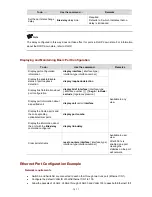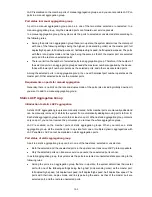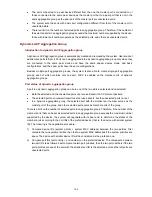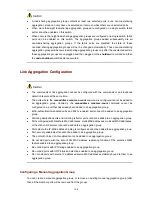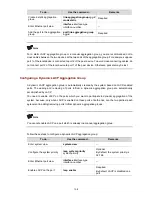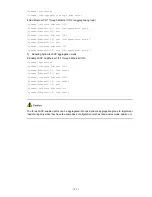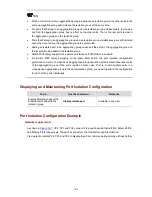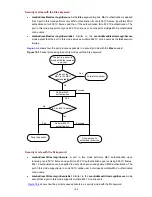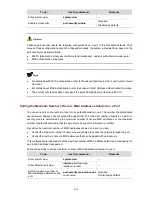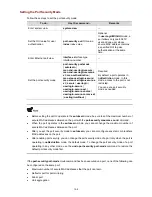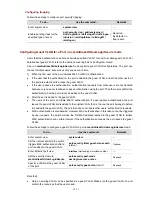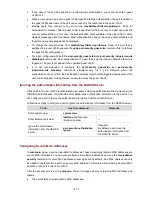
z
When a member port of an aggregation group joins/leaves an isolation group, the other ports in the
same aggregation group will join/leave the isolation group at the same time.
z
For ports that belong to an aggregation group and an isolation group simultaneously, removing a
port from the aggregation group has no effect on the other ports. That is, the rest ports remain in
the aggregation group and the isolation group.
z
Ports that belong to an aggregation group and an isolation group simultaneously are still isolated
even when you remove the aggregation group in system view.
z
Adding an isolated port to an aggregation group causes all the ports in the aggregation group on
the local unit to be added to the isolation group.
z
Switch 4500 family support cross-device port isolation if XRN fabric is enabled.
z
For Switch 4500 family belonging to the same XRN Fabric, the port isolation configuration
performed on a port of a cross-device aggregation group cannot be synchronized to the other ports
of the aggregation group if the ports reside on other units. That is, to add multiple ports in a
cross-device aggregation group to the same isolation group, you need to perform the configuration
for each of the ports individually.
Displaying and Maintaining Port Isolation Configuration
To do …
Use the command …
Remarks
Display information about the
Ethernet ports added to the
isolation group
display isolate port
Available in any view
Port Isolation Configuration Example
Network requirements
As shown in
Figure 14-1
, PC2, PC3 and PC4 connect to the switch ports Ethernet1/0/2, Ethernet1/0/3,
and Ethernet1/0/4 respectively. The switch connects to the Internet through Ethernet1/0/1.
It is desired to isolate PC2, PC3 and PC4 to disable them from communicating directly with each other.
14-2

